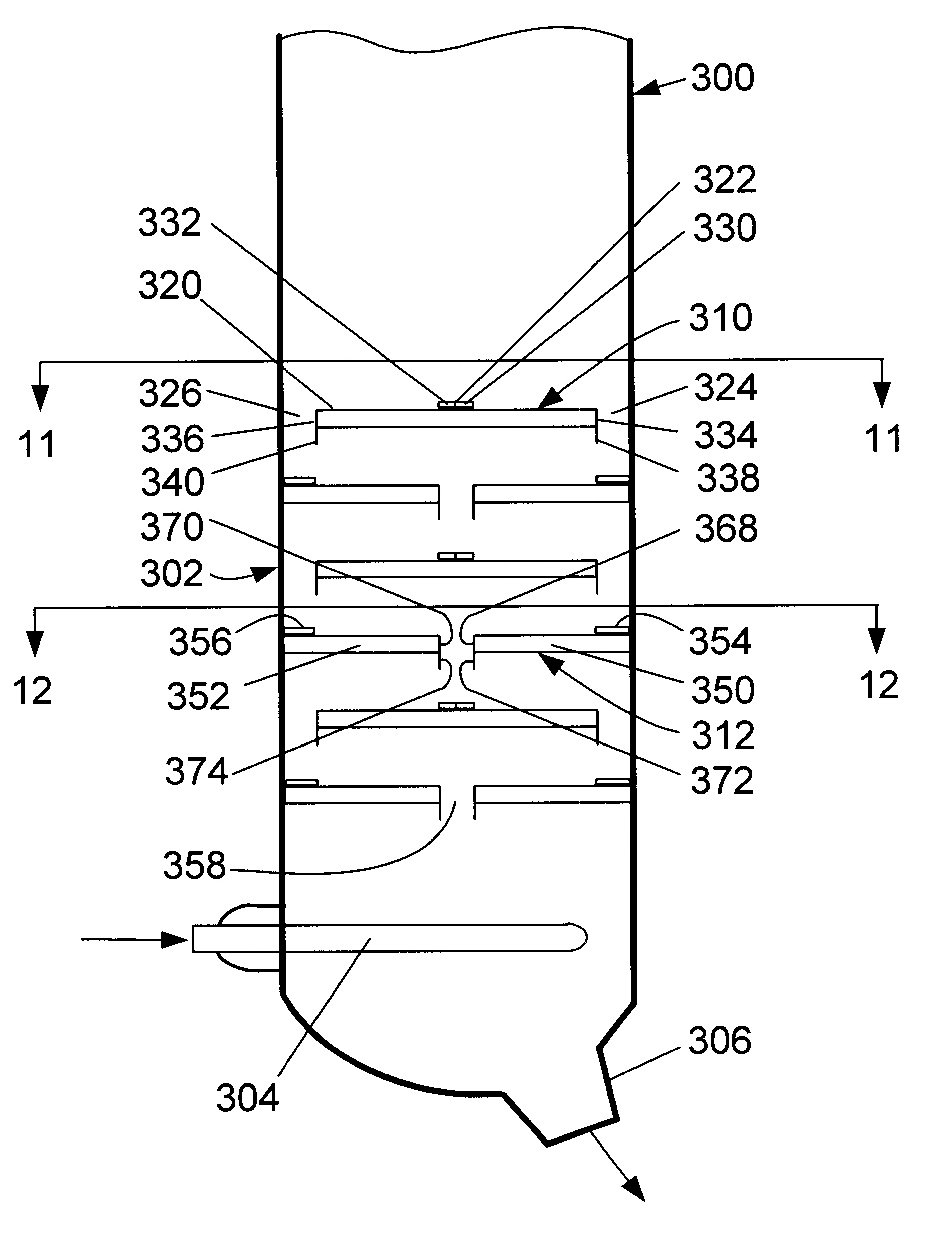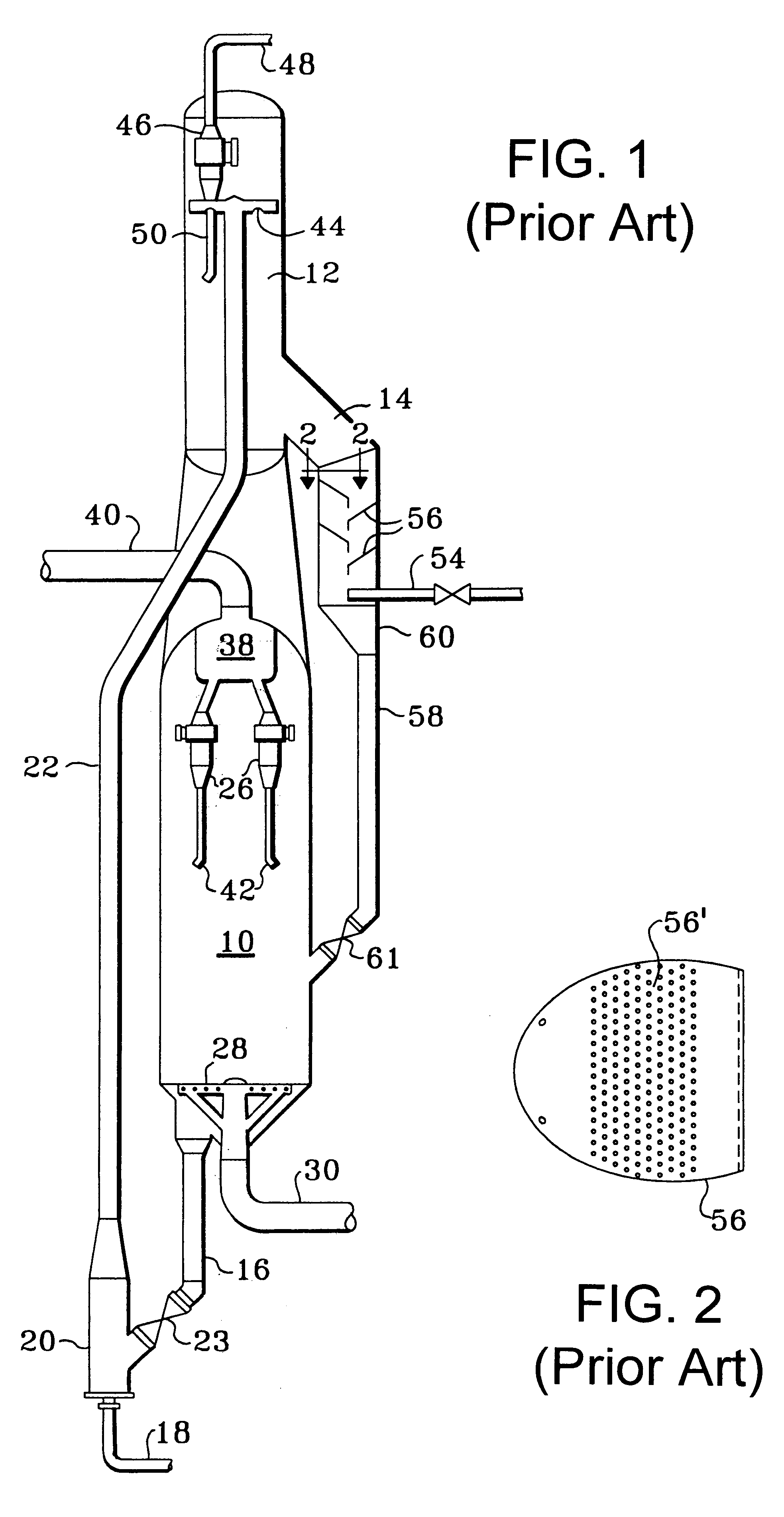Stripping process with horizontal baffles
a technology of horizontal baffles and stripping process, which is applied in chemical/physical processes, metal/metal-oxide/metal-hydroxide catalysts, and combustible gas purification/modification, etc. it can solve the problems of large surface area of the particles employed in the fcc process, significant amount of hydrocarbons being withdrawn from the reaction zone with the catalyst, and hotter regenerator temperatures
- Summary
- Abstract
- Description
- Claims
- Application Information
AI Technical Summary
Benefits of technology
Problems solved by technology
Method used
Image
Examples
Embodiment Construction
series of tests was conducted to more fully demonstrate the unique and unexpected change in stripping performance that results from the use of horizontal baffles with downcomers over using conventional, sloped baffles. A test apparatus was constructed to measure conventional stripping performance from clear plastic panels to permit visual observation. The test apparatus modeled a 19.degree. sector from a conventional cylindrical stripping arrangement similar to that shown in FIGS. 1 and 2 having a transverse cross-sectional area of about 0.19 m.sup.2 (2 ft.sup.2). Inner and outer stripping baffles having a trapezoidal shape and a projected horizontal area of about 0.09 m.sup.2 (1 ft.sup.2) were alternately placed at inner and outer locations of the apparatus to complete the model of a sector of a stripping vessel. A total of four effective outer baffles and three effective inner baffles were used with about a 97 cm (38 inch) spacing between adjacent outer baffles and between adjacen...
PUM
| Property | Measurement | Unit |
|---|---|---|
| angle | aaaaa | aaaaa |
| temperature | aaaaa | aaaaa |
| boiling points | aaaaa | aaaaa |
Abstract
Description
Claims
Application Information
 Login to View More
Login to View More - R&D
- Intellectual Property
- Life Sciences
- Materials
- Tech Scout
- Unparalleled Data Quality
- Higher Quality Content
- 60% Fewer Hallucinations
Browse by: Latest US Patents, China's latest patents, Technical Efficacy Thesaurus, Application Domain, Technology Topic, Popular Technical Reports.
© 2025 PatSnap. All rights reserved.Legal|Privacy policy|Modern Slavery Act Transparency Statement|Sitemap|About US| Contact US: help@patsnap.com



